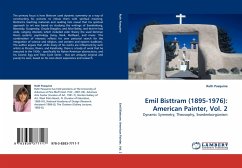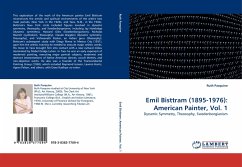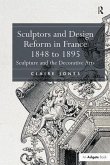The primary focus is how Bisttram used dynamic symmetry as a way of constructing his pictures to imbue them with spiritual meaning. Bisttram's teaching materials and reading lists reveal that his spiritual approach to art was based on studying the writings of Swedenborg, Blavatsky, Ouspensky, Claude Bragdon, and Alice Bailey, and that he had wide- ranging interests which included color theory (he used Denman Ross's system), psychology (Jung, Rank, Rudhyar), and music. This combination of interests reflects his own personal search for the integration of science and religion, and western and eastern traditions. The author argues that while many of his works are influenced by such artists as Picasso, Rivera, and Kandinsky, there is a body of work that he executed in the 1930s - specifically his Native American abstractions, and his Cosmic Egg and Time Cycle Series - that are uniquely original and purely his own, based on his own direct experience and research.








